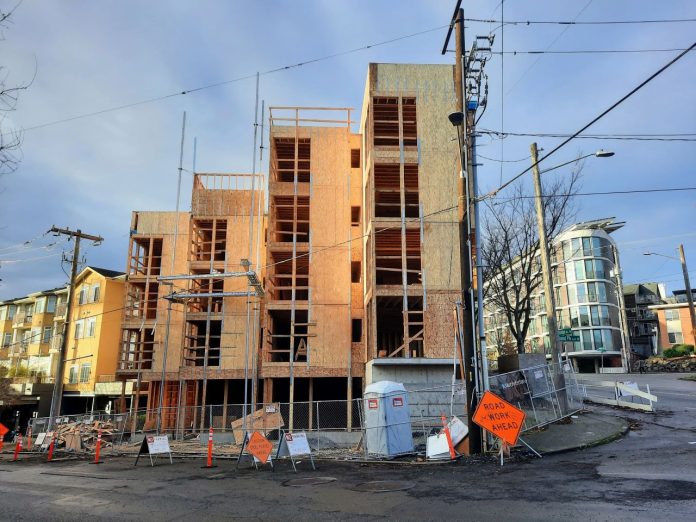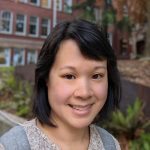Seattle has grown much faster than planners and policymakers predicted, which means our planning framework needs to be nimble. Every ten years Seattle makes a major update to the Comprehensive Plan, used to make rules about how we plan for growth and what kind of housing can be built where. The last time we had a major update, in 2015, we planned for growth of 70,000 homes through 2035. We have already reached 60,000 new homes in seven years by growing at more than double the rate projected. Yet we continue to fall short of creating the housing our rapidly growing city needs, as demonstrated by a seemingly intransigent housing affordability crisis.
The City will pass a major update to its Comprehensive Plan in 2024, and has already begun preparing a Draft Environmental Impact Statement (EIS) to vet this plan. We ask the City to add a bolder option, Alternative 6, to the One Seattle Comprehensive Plan EIS in order to ensure a full study of the housing crisis facing Seattle and to provide policymakers a full suite of tools to address it.
Sign our letter if you agree the City of Seattle should add Alternative 6.
Alternative 6 came together and caught fire thanks to tireless efforts by grassroots organizations like Share the Cities and Real Change. Community engagement, both online and in-person, has demonstrated overwhelming public support for considering more ambitious options. Alternative 6 was the most popular option based on an analysis of the scoping comments that the Office of Planning and Community Development (OPCD) received with 40% backing it.
Moreover, two-thirds of public comments advocated for either Alternative 5 or 6, showing bigger zoning proposals are highly popular. Public opinion polling showed similar results, and the idea has support on city council, too. Councilmembers Teresa Mosqueda and Tammy Morales have urged OPCD to add Alternative 6 to the study.
In response to public feedback, OPCD did augment Alternative 5, and we were pleased to see that. One important change is putting more multifamily housing capacity near major parks and on quieter streets off of busy, polluted arterial roads where they had been confined formerly. We thank the City for that change, but ask them to add Alternative 6 to the study so that we will have the flexibility to meet this challenge that the housing and climate crisis present. If Alternative 6 isn’t in the study, it will be ruled out before it’s even been considered.
The climate crisis demands a bolder approach: urban housing growth is the cure for suburban sprawl. Climate-driven migrations from heat and drought-stricken areas to temperate Seattle leaves a very plausible scenario that growth will actually increase rather than slow down from the highs of the recent tech-boom decade. At the same time, climate threats to both our food supply and our forests demand that we conserve rural land by accommodating growth in core urban areas.
The other danger of timid plans is that we will continue to have “Two Seattles,” where many neighborhoods will be ever further out of reach for most residents, instead of achieving the goal of becoming “One Seattle.” If fourplex zoning is as big as we’ll dream in Neighborhood Residential zones not within the walkshed of frequent transit, then those areas will contribute little net new housing and possibly no Mandatory Housing Affordability (MHA) contributions like all rezoned multifamily areas now contribute.
Under such a scenario, working class families won’t be able to afford those neighborhoods since little new housing will go in, and what does get built is likely to be teardowns of older single family homes for even pricier million-dollar megahomes, driving a further wedge between the “Two Seattles.” In such a world, not all Seattle neighborhoods would be bought into our shared housing affordability solution.
If Alternative 6 goes too far, let the data gathered in the EIS bear this out. Simply not studying an option because it seems too audacious or politically fraught would undermine the rigor of the study and the entire process, given the outpouring of support. At the very least, we should be open to studying the idea by adding Alternative 6 to the EIS so that councilmembers have plenty of options as they turn that study into the city’s zoning policy in 2024.
While Alternative 6 has meant different things to different people, we propose OPCD take some common themes and study them in order to provide an option that would more equitably distribute growth around the city compared to existing alternatives that mostly hew to the existing Urban Village growth strategy that the City’s own study found was detrimental to racial equity and housing affordability.
- Four-story multifamily zoning at a minimum in all residential areas.
- Stackable bonuses for delivering the following public benefits.
- Affordability – A two-story height bonus (with a corresponding floor area ratio bonus) for housing that maintains full public ownership or reserves a majority of homes as affordable for people earning less than 80% of area median income.
- Green building – A one-story height bonus for meeting deep green building standards, such as Passive House or mass timber construction plus waiving façade modulation and upper level setback requirements for these buildings since they worsen green building performance and energy efficiency.
- Tree canopy – Height and density incentives to boost buildable square footage when preserving exceptional trees or providing for new tree canopy cover. Preserving trees and ensuring new development is economically feasible shouldn’t be mutually exclusive.
- Throughout the 15-minute walkshed of frequent transit, at least five-story buildings should be allowed (with the further bonuses for affordable housing and deep green buildings still applying).
- Study adding 200,000 homes by 2044. Maintaining our same pace of housing growth since 2015 would entail 160,000 new homes by 2044. Why assume and plan for a deceleration of urban housing growth in the future if we want to drive down housing prices and regional climate pollution, and create climate-resilient 15-minute neighborhoods?
- Increased opportunities for commercial activity in residential areas via corner stores and similar strategies.
These characteristics are similar to what we laid out in a joint letter to OPCD that a broad coalition of organizations signed. That coalition backed studying Alternative 6 during scoping and wrote:
“A new alternative, Alternative 6, should expand on the Combined Growth Strategy and be explicitly designed as the anti-displacement alternative requested by the Comprehensive Plan Racial Equity Analysis: it should “end the prevalence of single-family zoning” with a “racially inclusive approach.” This includes anti-displacement overlays in areas of high displacement risk and allowing maximum growth of the most affordable housing types in areas of high opportunity. It could look like a connected network of complete neighborhoods, allowing 4-6 story apartments in all neighborhoods, with bonuses for affordable homes by right, and ground floor commercial and community spaces to serve people’s daily needs. It should explore density bonuses and exemptions from setback requirements for green buildings, to encourage mass timber and passive house techniques.”
-Letter to OPCD from coalition including 350 Seattle, Housing Development Consortium, Sierra Club, Futurewise, Cascade Bicycle Club, The Urbanist, and more.
This bolder approach could bring considerable benefits, including a greater impetus to build housing in more of the city and reverse patterns of exclusion and segregation. Only allowing fourplexes in Neighborhood Residential zones, meanwhile, appears likely to fall short on both counts. We concur with the Seattle Planning Commission scoping letter: “If three- or four-unit projects do not create enough of an incentive for developers, they will continue to build large single-family homes instead. Early results from broad upzoning in Minneapolis and Portland indicate that in tight markets like Seattle, developers are not building housing with two, three, or even four units despite new zoning because the projects are not cost-effective.”
Four floors and corner stores isn’t a radical proposal. It’s how cities have been built for millennia, and it’s allowed them to be walkable, dynamic, and adaptive. Given the housing crisis, climate crisis, and gaping racial inequities, we think it’s time for Seattle to employ this time-tested innovation throughout its borders.
The City of Seattle will shortly be making housing and land use decisions that will reverberate for decades. We ask OPCD and Mayor Bruce Harrell to heed the majority of public comments and go big.
Take Action – What can you do to advocate for Alternative 6 and other ideas to improve Seattle’s Comprehensive Plan?
- Sign on to our public sign-on letter. It will only take a few seconds and will add your voice to the growing calls for Alternative 6.
- Attend an event: OPCD is hosting a community meeting on Tuesday January 10 at Meadowbrook Community Center from 6-8 pm, where you have an opportunity to talk with City staff and other residents about your One Seattle ideas.




